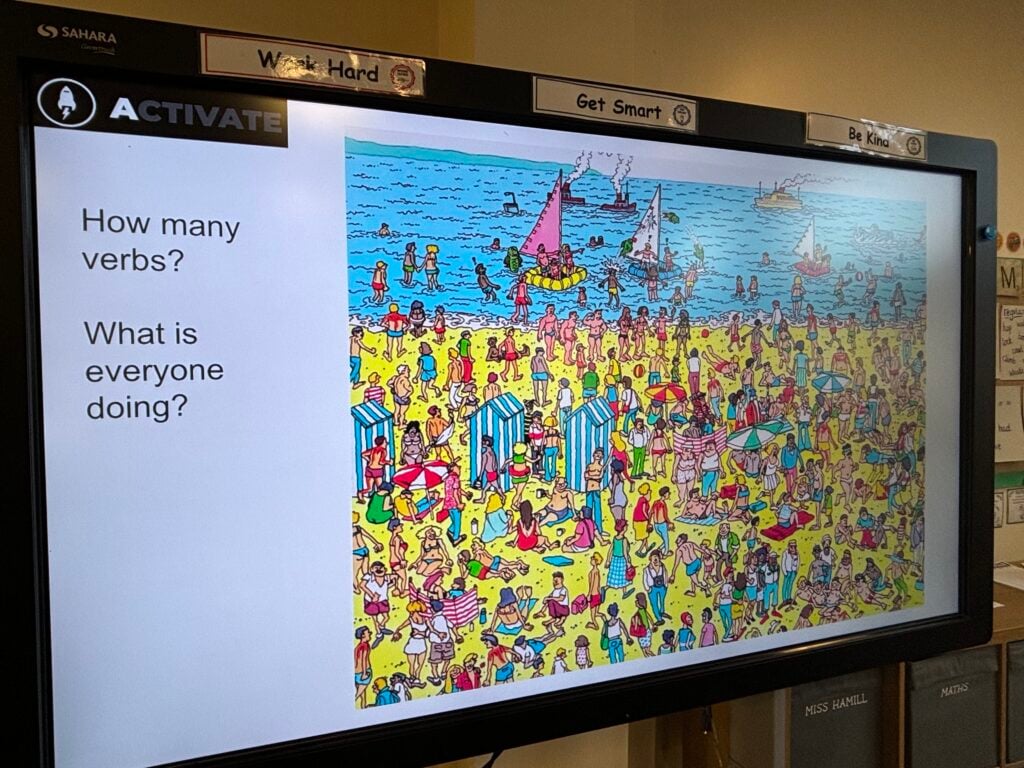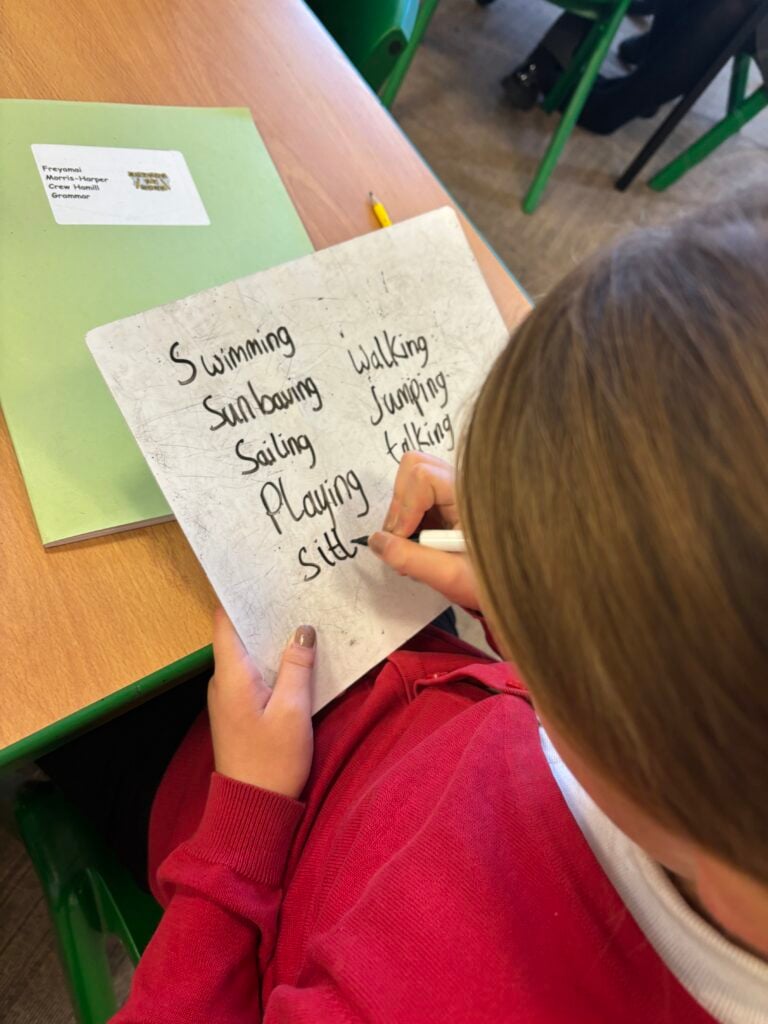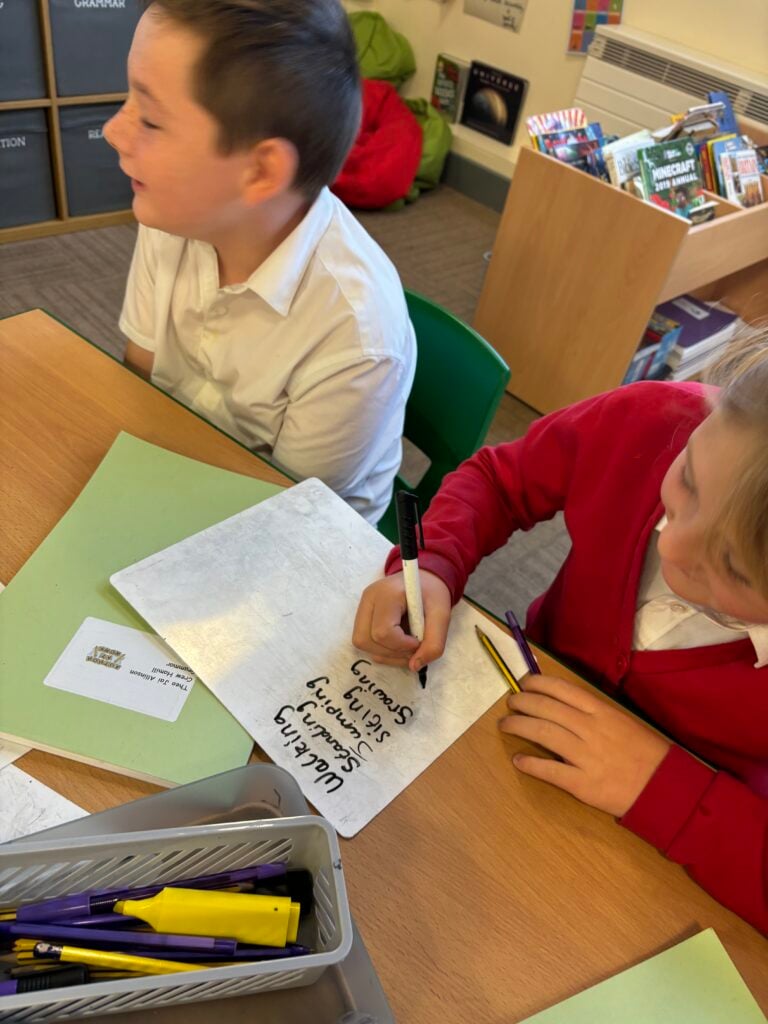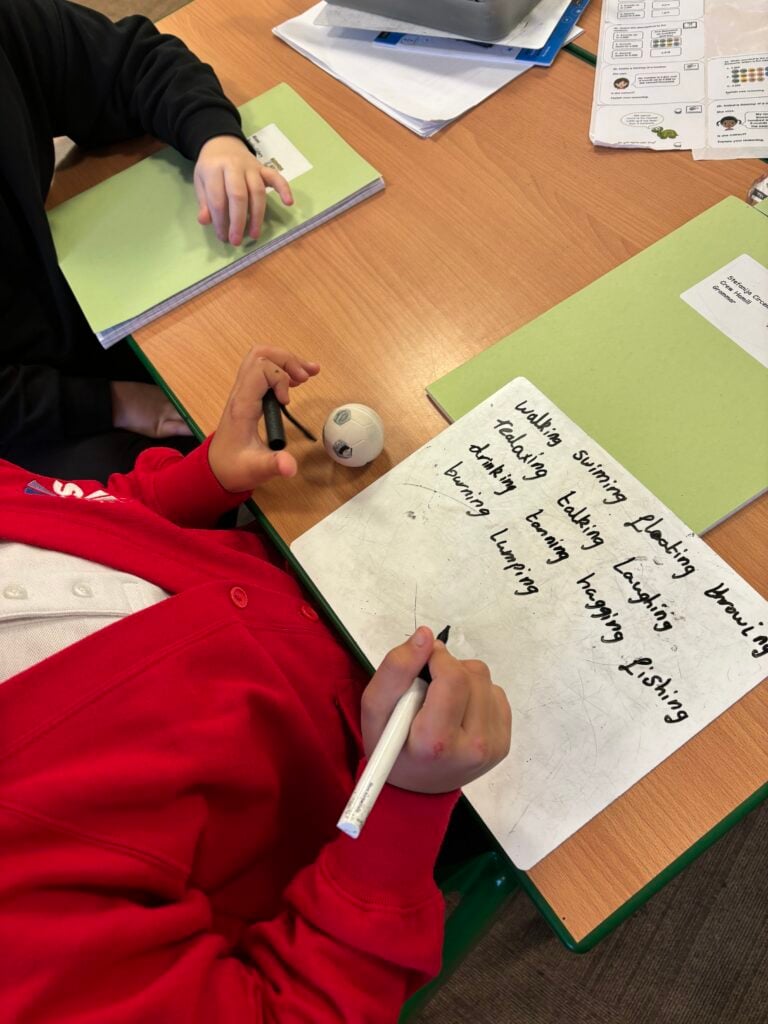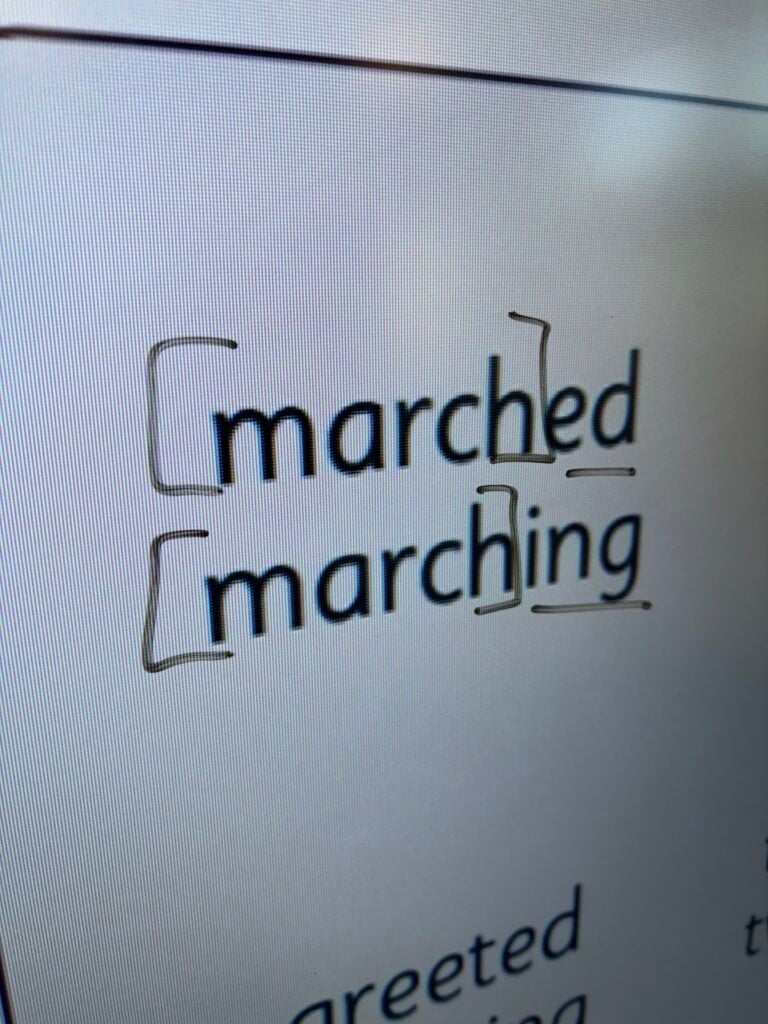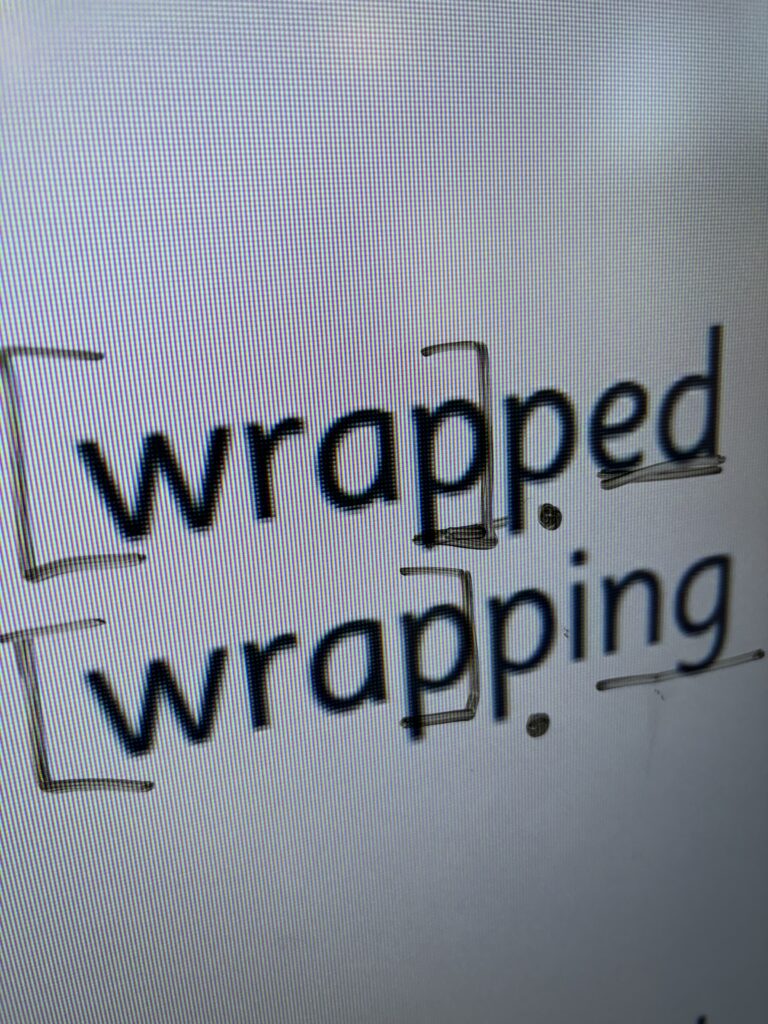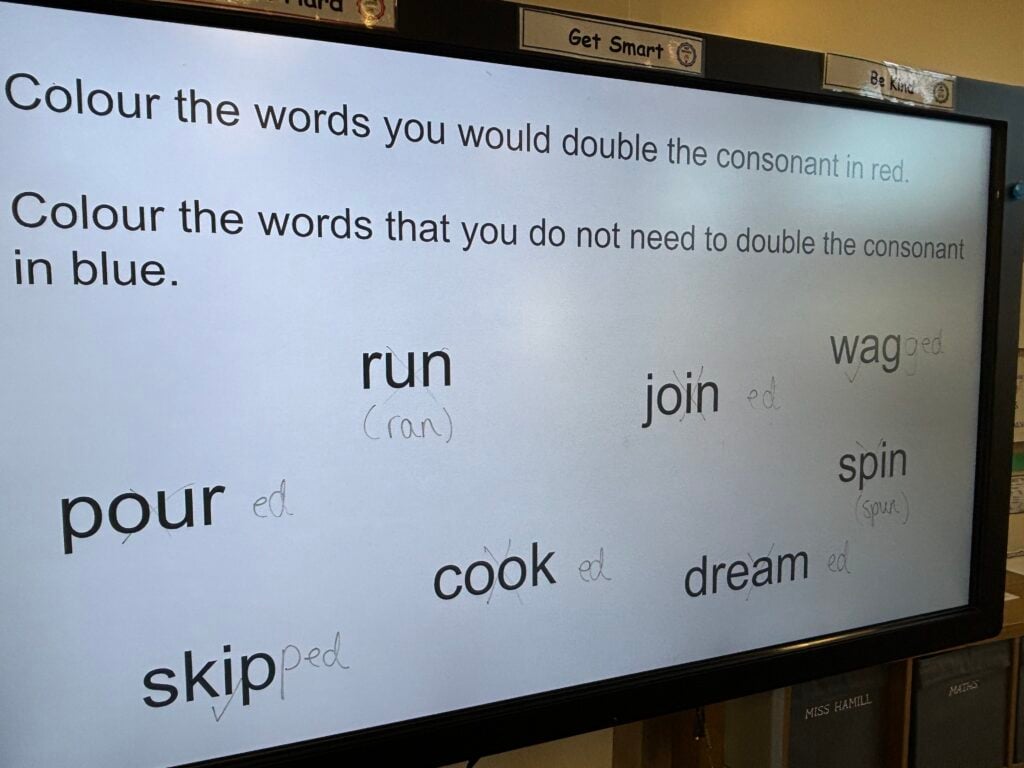To activate our learning today, we looked at a picture of ‘Where’s Wally?’ Our job wasn’t to find Wally though! We had to see what was happening in the picture and identify as many verbs as we could – swim, laugh, sunbathe, burn, throw, sail, float etc. Then, we continued looking at regular verbs and discussed turning them into past tense verbs by adding the -ed suffix. However, we soon noticed that we couldn’t just add -ed on the end to all regular verbs, some of them required you to double the end consonant before you did. For example, the word march can be turned into past tense by simply adding -ed -> marched. However, the word wrap would need the final consonant (the p) doubling before we added -ed -> wrapped. We identified that any regular verb that has a short vowel sound (a, e, i, o or u) followed by a single consonant would need the final consonant doubling. However, regular verbs with a longer vowel sounds (ay, ee, ie etc.) would just need -ed adding to the end.
